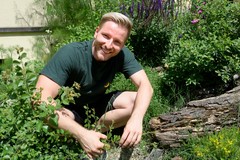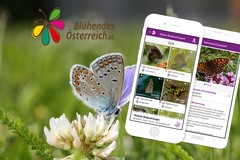Marketing cookies are used to track the activities of website visitors. This enables advertisements to be displayed that are relevant and appealing for each individual user, and consequently more valuable for publishers and third-party advertisers.
- Service name:YouTube
- Privacy policy:https://policies.google.com/privacy
- Owner:Google Ireland Limited
- HTML Local Storage:yt-remote-device-id
- Purpose:Stores the user settings when retrieving a YouTube video integrated on other web pages.
- Third party:Yes
- HTML Local Storage:yt.innertube::requests
- Purpose:Stores the user settings when retrieving a YouTube video integrated on other web pages.
- Third party:Yes
- HTML Local Storage:yt.innertube::nextId
- Purpose:Stores the user settings when retrieving a YouTube video integrated on other web pages.
- Third party:Yes
- HTML Local Storage:yt-remote-connected-devices
- Purpose:Stores the user settings when retrieving a YouTube video integrated on other web pages.
- Third party:Yes
- HTML Local Storage:yt-player-bandwidth
- Purpose:Stores the user settings when retrieving a YouTube video integrated on other web pages.
- Third party:Yes
- HTML Session Storage:yt-remote-session-app
- Purpose:Stores the user settings when retrieving a YouTube video integrated on other web pages.
- Third party:Yes
- HTML Session Storage:yt-remote-cast-installed
- Purpose:Stores the user settings when retrieving a YouTube video integrated on other web pages.
- Third party:Yes
- HTML Session Storage:yt-remote-session-name
- Purpose:Stores the user settings when retrieving a YouTube video integrated on other web pages.
- Third party:Yes
- HTML Session Storage:yt-remote-cast-available
- Purpose:Stores the user settings when retrieving a YouTube video integrated on other web pages.
- Third party:Yes
- HTML Session Storage:yt-remote-fast-check-period
- Purpose:Stores the user settings when retrieving a YouTube video integrated on other web pages.
- Third party:Yes
- HTTP-Cookie:__Secure-3PSIDCC
- Purpose:Used by for targeting purposes to profile the interests of the website visitor and display relevant and personalised Google advertising
- Domain:.google.com
- Retention period:1 year
- Third party:Yes
- HTTP-Cookie:SIDCC
- Purpose:Security cookie to protect user data from unauthorised access.
- Domain:.google.com
- Retention period:1 year
- Third party:Yes
- HTTP-Cookie:__Secure-3PAPISID
- Purpose:Used by for targeting purposes to profile the interests of the website visitor and display relevant and personalised Google advertising
- Domain:.google.com
- Retention period:2 years
- Third party:Yes
- HTTP-Cookie:HSID
- Purpose:Used by Google in combination with SID to verify Google user account and last login time.
- Domain:.google.com
- Retention period:2 years
- Third party:Yes
- HTTP-Cookie:__Secure-3PSID
- Purpose:Used by for targeting purposes to profile the interests of the website visitor and display relevant and personalised Google advertising
- Domain:.google.com
- Retention period:2 years
- Third party:Yes
- HTTP-Cookie:SID
- Purpose:These Google security cookies help authenticate the user, prevent fraudulent use of login credentials, and protect user data from unauthorised access.
- Domain:.google.com
- Retention period:2 years
- Third party:Yes
- HTTP-Cookie:SSID
- Purpose:These Google security cookies help authenticate the user, prevent fraudulent use of login credentials, and protect user data from unauthorised access.
- Domain:.google.com
- Retention period:2 years
- Third party:Yes
- HTTP-Cookie:SAPISID
- Purpose:These Google security cookies help authenticate the user, prevent fraudulent use of login credentials, and protect user data from unauthorised access.
- Domain:.google.com
- Retention period:2 years
- Third party:Yes
- HTTP-Cookie:APISID
- Purpose:These Google security cookies help authenticate the user, prevent fraudulent use of login credentials, and protect user data from unauthorised access.
- Domain:.google.com
- Retention period:2 years
- Third party:Yes
- HTTP-Cookie:1P_JAR
- Purpose:This cookie is used to support Google's advertising services
- Domain:.google.com
- Retention period:1 month
- Third party:Yes
- Service name:Google reCAPTCHA
- Privacy policy:https://policies.google.com/privacy
- Owner:Google Ireland Limited
- HTTP-Cookie:1P_JAR
- Purpose:This cookie is used to support Google's advertising services
- Domain:.google.com
- Retention period:1 month
- Third party:Yes
- HTTP-Cookie:APISID
- Purpose:These Google security cookies help authenticate the user, prevent fraudulent use of login credentials, and protect user data from unauthorised access.
- Domain:.google.com
- Retention period:2 years
- Third party:Yes
- HTTP-Cookie:CONSENT
- Purpose:Wird von Google verwendet um festzustellen ob Benutzer Inhalten aus der Marketing Kategorie zugestimmt haben.
- Domain:.google.com
- Retention period:2 years
- Third party:Yes
- HTTP-Cookie:DV
- Purpose:Wird von Google verwendet um Benutzereinstellungen zu speichen. Betrifft hauptsächlich Einstellungen die die Suche betreffen wie Sprache, Anzahl der Suchergebnisse etc.
- Domain:www.google.com
- Retention period:7 minutes
- Third party:Yes
- HTTP-Cookie:HSID
- Purpose:Used by Google in combination with SID to verify Google user account and last login time.
- Domain:.google.com
- Retention period:2 years
- Third party:Yes
- HTTP-Cookie:NID
- Purpose:Wird von Google verwendet um Benutzereinstellungen zu speichen. Betrifft hauptsächlich Einstellungen die die Suche betreffen wie Sprache, Anzahl der Suchergebnisse etc.
- Domain:.google.com
- Retention period:182 days
- Third party:Yes
- HTTP-Cookie:SAPISID
- Purpose:These Google security cookies help authenticate the user, prevent fraudulent use of login credentials, and protect user data from unauthorised access.
- Domain:.google.com
- Retention period:2 years
- Third party:Yes
- HTTP-Cookie:SEARCH_SAMESITE
- Purpose:These Google security cookies help authenticate the user, prevent fraudulent use of login credentials, and protect user data from unauthorised access.
- Domain:.google.com
- Retention period:2 years
- Third party:Yes
- HTTP-Cookie:SID
- Purpose:These Google security cookies help authenticate the user, prevent fraudulent use of login credentials, and protect user data from unauthorised access.
- Domain:.google.com
- Retention period:2 years
- Third party:Yes
- HTTP-Cookie:SIDCC
- Purpose:Security cookie to protect user data from unauthorised access.
- Domain:.google.com
- Retention period:1 year
- Third party:Yes
- HTTP-Cookie:SSID
- Purpose:These Google security cookies help authenticate the user, prevent fraudulent use of login credentials, and protect user data from unauthorised access.
- Domain:.google.com
- Retention period:2 years
- Third party:Yes
- HTTP-Cookie:__Secure-1PAPISID
- Purpose:Used by for targeting purposes to profile the interests of the website visitor and display relevant and personalised Google advertising
- Domain:.google.com
- Retention period:2 years
- Third party:Yes
- HTTP-Cookie:__Secure-1PSID
- Purpose:Used by for targeting purposes to profile the interests of the website visitor and display relevant and personalised Google advertising
- Domain:.google.com
- Retention period:2 years
- Third party:Yes
- HTTP-Cookie:__Secure-3PAPISID
- Purpose:Used by for targeting purposes to profile the interests of the website visitor and display relevant and personalised Google advertising
- Domain:.google.com
- Retention period:2 years
- Third party:Yes
- HTTP-Cookie:__Secure-3PSID
- Purpose:Used by for targeting purposes to profile the interests of the website visitor and display relevant and personalised Google advertising
- Domain:.google.com
- Retention period:2 years
- Third party:Yes
- HTTP-Cookie:__Secure-3PSIDCC
- Purpose:Used by for targeting purposes to profile the interests of the website visitor and display relevant and personalised Google advertising
- Domain:.google.com
- Retention period:1 year
- Third party:Yes
- Service name:Facebook Meta Pixel
- Privacy policy:https://www.facebook.com/policy.php
- Owner:Facebook
- HTTP-Cookie:c_user
- Purpose:Enthält die Benutzer-ID des aktuell angemeldeten Benutzers bei Facebook
- Domain:.facebook.com
- Retention period:1 year
- Third party:Yes
- HTTP-Cookie:datr
- Purpose:Identifiziert den Webbrowser, der zur Verbindung mit Facebook verwendet wird.
- Domain:.facebook.com
- Retention period:2 years
- Third party:Yes
- HTTP-Cookie:oo
- Purpose:Hilft dabei, die Anzeige von Werbung basierend auf Aktivitäten auf Drittanbieter-Websites zu deaktivieren.
- Domain:.facebook.com
- Retention period:1 year
- Third party:Yes
- HTTP-Cookie:presence
- Purpose:Enthält den Chat-Status des Benutzers.
- Domain:.facebook.com
- Retention period:Session
- Third party:Yes
- HTTP-Cookie:sb
- Purpose:Speichert Browserdetails für Freundschaftsvorschläge.
- Domain:.facebook.com
- Retention period:2 years
- Third party:Yes
- HTTP-Cookie:usida
- Purpose:Dieses Cookie sammelt eine Kombination aus dem Browser des Benutzers und eindeutigen Kennungen, die zur Anpassung der Werbung an die Benutzer verwendet werden.
- Domain:.facebook.com
- Retention period:Session
- Third party:Yes
- HTTP-Cookie:wd
- Purpose:Speichert die Abmessungen des Browserfensters.
- Domain:.facebook.com
- Retention period:1 year
- Third party:Yes
- HTTP-Cookie:xs
- Purpose:Enthält die Sitzungsnummer und das Sitzungsgeheimnis.
- Domain:.facebook.com
- Retention period:1 year
- Third party:Yes
 Zoological Curator and biologist Rupert Kainradl: "I discovered my love for butterflies back when I was a kid. Unfortunately, over the years I have come to realize that the species diversity and abundance of butterflies are decreasing. It takes only a little bit of effort to quickly improve the environment for butterflies. Only shortly after we installed our butterfly island next to the Aquarium-Terrarium House, the first swallowtail laid its eggs."
Zoological Curator and biologist Rupert Kainradl: "I discovered my love for butterflies back when I was a kid. Unfortunately, over the years I have come to realize that the species diversity and abundance of butterflies are decreasing. It takes only a little bit of effort to quickly improve the environment for butterflies. Only shortly after we installed our butterfly island next to the Aquarium-Terrarium House, the first swallowtail laid its eggs." App "Schmetterlinge Österreichs" (Butterflies Austria)
App "Schmetterlinge Österreichs" (Butterflies Austria)